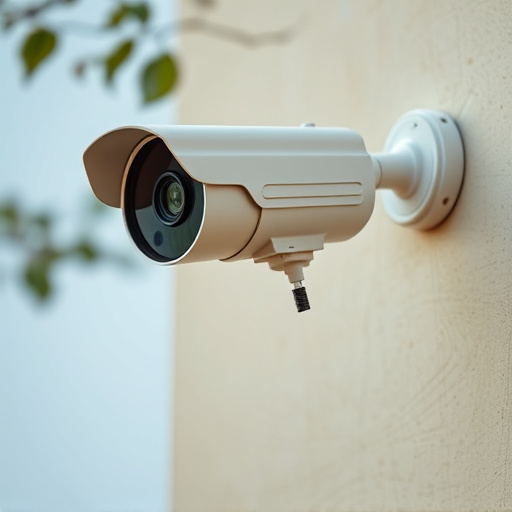Installing multiple fake security cameras at diverse heights is an effective strategy to bolster property security. By positioning cameras from ground to rooftop, blind spots are eliminated, offering comprehensive coverage and valuable evidence in case of breaches. This method deters thieves and vandals through a realistic surveillance network that requires strategic mounting heights, unobstructed lines of sight, and regular maintenance for optimal performance. Avoid common mistakes like uniform heights or clustering to minimize false alerts and enhance security.
In today’s digital age, enhancing home or business security has become a top priority. One innovative approach gaining traction is the strategic placement of fake security cameras. This guide delves into the art of installing multiple fake security cameras at optimal heights to create an effective deterrent system. Understanding the purpose behind these decoys and navigating key factors like mounting heights, camera arrangement, and common pitfalls will ensure a realistic and efficient setup.
- Understanding the Purpose of Fake Security Cameras
- Factors to Consider When Choosing Mounting Heights
- Best Practices for Installing Multiple Cameras
- Common Mistakes to Avoid During Setup
- Tips for Maintaining Realistic Appearance and Effectiveness
Understanding the Purpose of Fake Security Cameras
Fake security cameras serve a dual purpose; they act as deterrents for potential thieves and vandals, while also providing peace of mind to homeowners and business owners alike. By simulating real surveillance, these cameras can significantly reduce crime rates in residential and commercial areas. When planning an installation strategy, understanding the layout of your property is key. One effective approach is to install multiple fake security cameras at various heights to create a comprehensive surveillance network. This tactic not only covers more ground but also adds layers of protection, as criminals will have to navigate through multiple deterrents.
For optimal results, consider positioning these cameras at different levels—from ground level to high-up areas like windows and rooftops. This diverse placement ensures that no blind spots remain, offering a complete view of your property. Additionally, mounting them at strategic heights allows for the capture of license plates and clear images of faces, providing valuable evidence in case of any security breaches.
Factors to Consider When Choosing Mounting Heights
When installing multiple fake security cameras, choosing the right mounting heights is crucial for maximizing their effectiveness and coverage. Several factors come into play here. For one, consider the camera’s field of view—each camera should have an unobstructed line of sight to cover key areas without overlap or gaps in surveillance. This means positioning them at strategic heights that align with the area’s layout.
Another aspect is lighting conditions, as well as the camera’s angle; you’ll want to ensure cameras are placed where they receive adequate light for clear visuals during all times of day and night. Additionally, think about potential obstacles like trees or buildings that might cast shadows on your target zones—mounting at slightly elevated heights can help mitigate these issues, ensuring each camera captures high-quality footage consistently.
Best Practices for Installing Multiple Cameras
When installing multiple fake security cameras, a strategic approach is essential for optimal coverage and visual deterrence. Best practices involve positioning cameras at varying heights and angles to create a comprehensive surveillance network. Begin by identifying key areas that require monitoring, such as entry points, perimeter walls, and potential blind spots. Mount lower cameras close to the ground for catching intricate details and suspicious activities while installing higher ones on fixtures or walls to capture over-the-head views.
Ensure each camera has a clear line of sight without obstructions like trees or signs that could hinder their field of vision. Consider using a combination of fixed and adjustable mounts to adapt to different scenarios and maintain flexibility. Regularly review and adjust camera placements as needed, especially after seasonal changes or construction projects, to maintain the most effective security system.
Common Mistakes to Avoid During Setup
When setting up multiple fake security cameras, there are some common mistakes that homeowners often make. One of the most frequent errors is neglecting to consider the mounting height. Each camera should be positioned at a different level to create a more realistic surveillance network. If all cameras are mounted at the same height, it can raise suspicions during any potential break-in attempt.
Another blunder is clustering too many cameras in one area, creating an obvious pattern that could alert intruders. Ensure each camera has a unique field of view and coverage area to enhance overall security without raising unnecessary alarms. Additionally, don’t forget to test the cameras’ angles and lines of sight to guarantee they capture clear images from various perspectives, making it harder for criminals to exploit blind spots.
Tips for Maintaining Realistic Appearance and Effectiveness
To maintain a realistic appearance, strategically placing fake security cameras is key. When installing multiple cameras, consider creating a dense network that mimics genuine surveillance systems. Position them at various heights and angles, ensuring they cover blind spots and overlap slightly to avoid any gaps in coverage. This approach adds depth and authenticity, making it harder for intruders to identify the fakes.
Additionally, regular maintenance is crucial for effectiveness. Dust and debris can accumulate over time, affecting the cameras’ appearance and functionality. Periodically clean and adjust them to ensure optimal positioning. Keep an eye out for any signs of damage or disorientation, promptly replacing or realigning as needed to maintain the illusion of a fully functional security system.
When installing multiple fake security cameras, understanding the specific requirements of each location is key. By considering factors like lighting, visibility, and the camera’s field of view, you can ensure optimal coverage. Best practices include using a variety of mounting heights and angles to create a comprehensive surveillance network. Avoid common mistakes by testing setup configurations beforehand and maintaining regular upkeep to prevent any loss in realism or effectiveness. Remember, the success of fake security cameras relies on meticulous planning and attention to detail.
